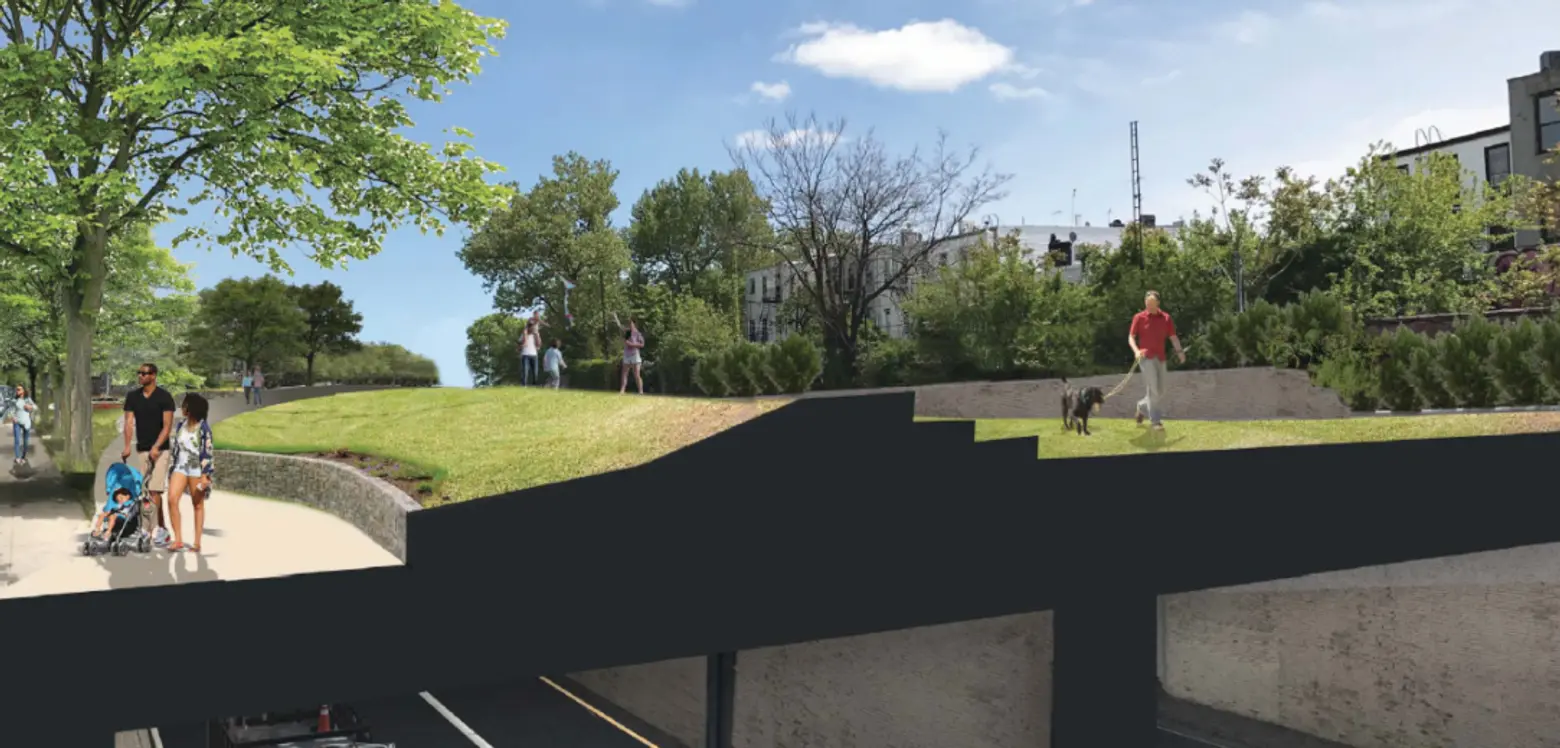Study recommends creating a High Line-style park along Brooklyn’s Prospect Expressway

Rendering via BHA
A new study recommends building a cantilevered linear park to run along the Prospect Expressway in Brooklyn, akin to the High Line. Developed by students from NYU Wagner’s capstone program, PX Forward proposes ways to reimagine the 2.3-mile-long corridor, whose construction was led by Robert Moses between 1953 and 1962. As it stands today, the expressway cuts through neighborhoods like South Slope, Windsor Terrace, Greenwood Heights and Kensington, exposing residents to unsafe conditions due to high traffic and noise pollution.

Via PX Forward study
To improve the appearance and connectivity of Prospect Expressway, the students propose creating new uses for shoulder space in the highway trench. The study recommends developing a cantilevered linear path, to be called Prospect Path, that would improve pedestrian experience and create distance from traffic.
Prospect Path would include dedicated walkways, bike lanes for cyclists, passive seating as well as trees and plants. This would increase the amount of–and ease access to–open space in the neighborhood. The added greenery would help absorb air pollutants and noise. Because the land next to the expressway is owned by the state, the project would require participation from state lawmakers and the state’s transportation department.
Brooklyn Borough President Eric Adams commissioned the study and announced this week that he sent a letter to the State Department of Transporation, imploring them to consider recommendations in PX Forward. Adams also is asking DOT to fund a design competition to “truly reimagine the corridor.”
“These are initial ideas generated from extensive community outreach but must be continued to be studied, refined and further explored,” Adams said Monday at an event announced the study’s results. “Our students have set the foundation for this conversation and we need our State and City agencies to build on it.”
 Via PX Forward study
Via PX Forward study
Another recommendation detailed in the report includes boulevarding the Prospect Expressway as a way to increase mobility for pedestrians and cyclists by adding new paths and lanes. This would require adding dedicated bus lanes and pedestrian crossings, as well as reducing the number of car lanes to “calm traffic.”
The students want to launch a feasibility study into the idea of adding a deck over the highway to create new land for pedestrians, and possibly land for commercial use or housing. Decking would add more open space and land prime for development.
To improve pedestrian experiences on the bridges, the study suggests installing public art, decals and vibrant paint. Additional plantings and an alternative design for the existing chain-link fence would allow for more flow and light.
Read the full “PX Forward” study here.
[Via Brownstoner]
RELATED:
































